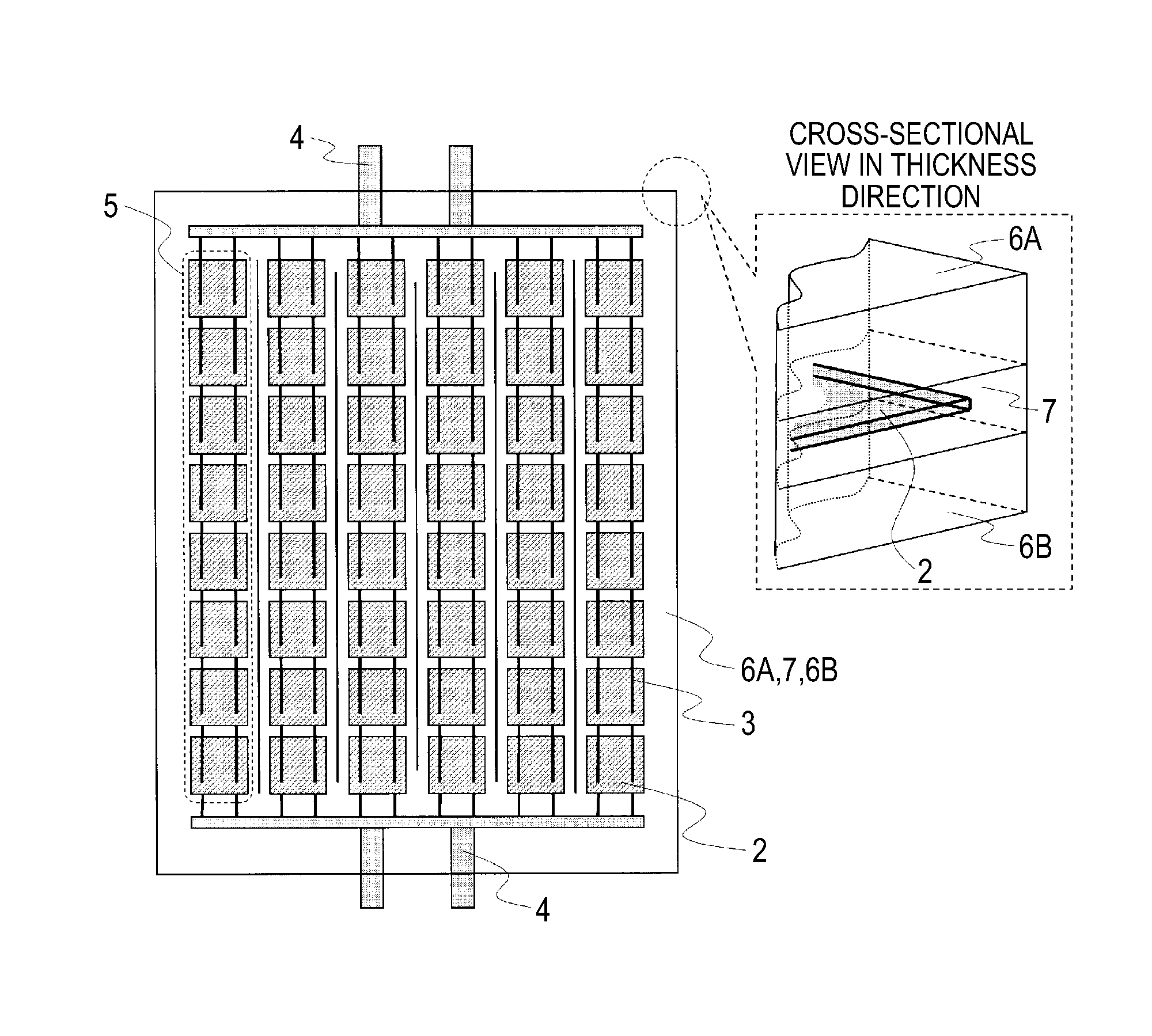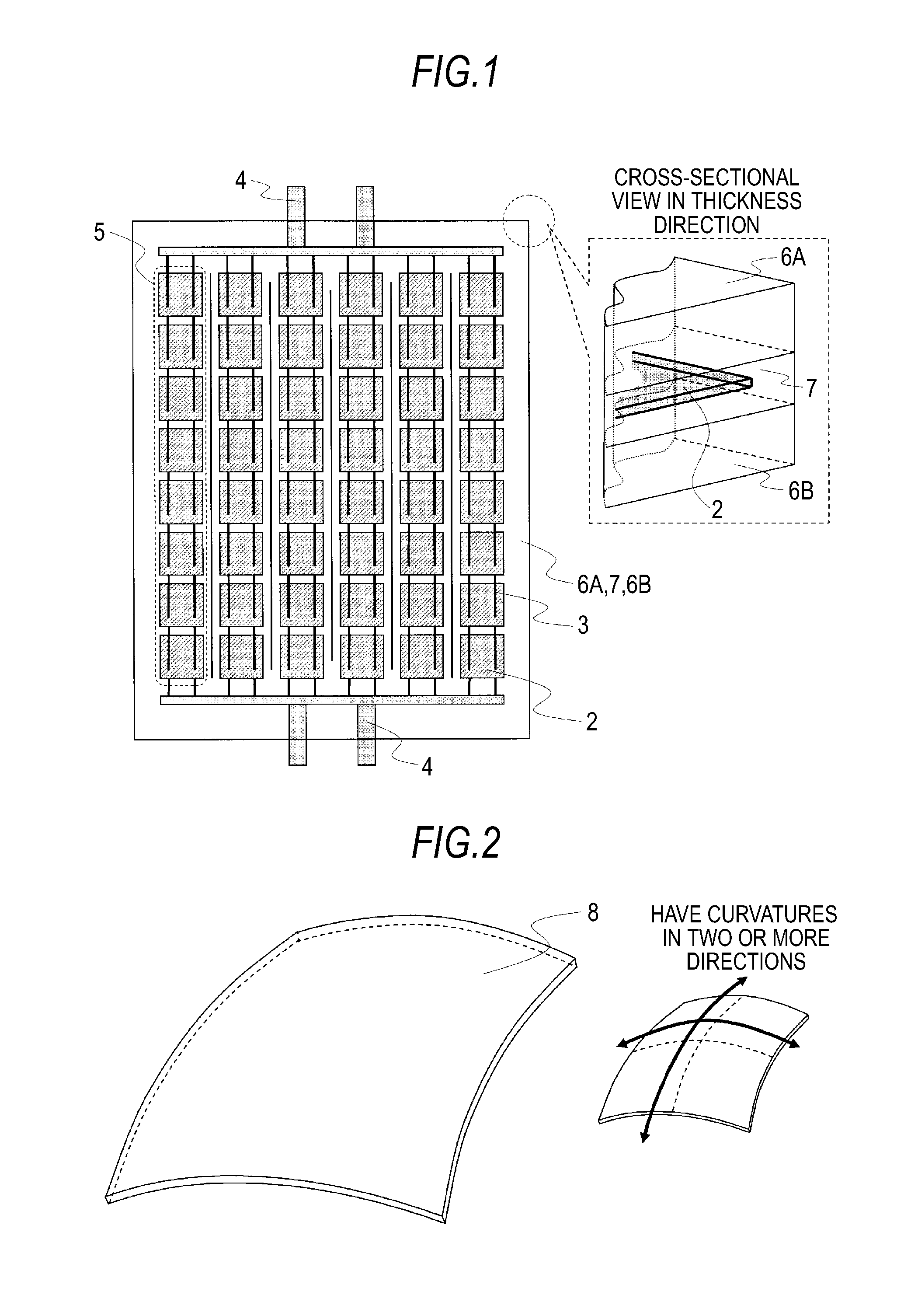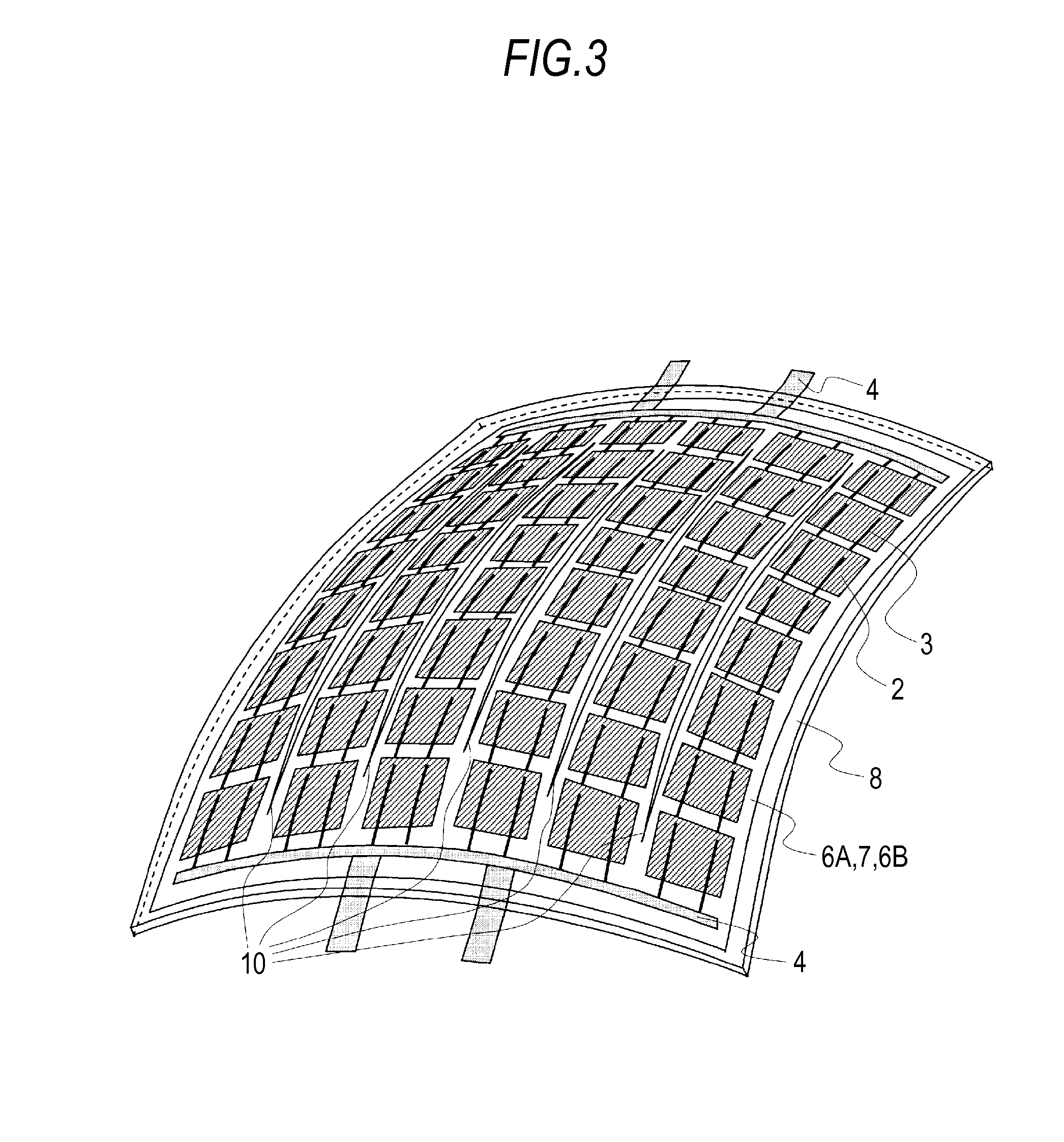Solar cell module
- Summary
- Abstract
- Description
- Claims
- Application Information
AI Technical Summary
Benefits of technology
Problems solved by technology
Method used
Image
Examples
embodiment 1
[0023]FIG. 1 is a view showing a solar cell sheet 1 included in a solar cell module shown in FIG. 3.
[0024]The solar cell sheet 1 according to the present embodiment includes at least plural solar cells 2, tabs between cells 3 electrically connecting adjacent solar cells 2 and a pair of transparent sheets (a front-face transparent sheet 6A and a rear-face sheet 6B sandwiching the cells 2 from both sides).
[0025]The solar cell sheet 1 usually requires, in addition to the above components, extraction electrodes 4 for electrically connecting both ends of solar cell strings 5 including plural solar cells 2 and extracting electric current to the outside of the solar cell sheet 1 and a filler resin 7 for filling in among the solar cells 2, the tabs between cells 3 and the extraction electrodes 4.
[0026]In the solar cell sheet 1, through incisions 10 piercing through the front-face transparent sheet 6A, the rear-face sheet 6B and the filler resin 7 are formed between strings of the solar cell...
embodiment 2
[0044]FIG. 5 is the entire view of a solar cell module according to Embodiment 2.
[0045]In Embodiment 2, as the solar cell sheet 1 and the transparent curved surface substrate 8 included in the solar cell module are the same as ones explained in Embodiment 1, therefore, the same reference numerals are used for them and the explanation will be omitted.
[0046]FIG. 6A is a cross-sectional view showing from the extraction electrode 4 in the back side to the extraction electrode 4 in near side in FIG. 5. A different point between the above Embodiment 1 and the present embodiment is as follows. The solar cell sheet 1 and the transparent curved surface substrate 8 are bonded and fixed with just the fixing filler resin 9 in FIG. 4A in Embodiment 1, whereas in Embodiment 2, the solar cell sheet 1 is sandwiched between the transparent curved surface substrate 8 and a rear-face sealing sheet 11, and its surrounded closed space is filled with the fixing filler resin 9 to thereby seal the solar ce...
PUM
 Login to View More
Login to View More Abstract
Description
Claims
Application Information
 Login to View More
Login to View More - R&D
- Intellectual Property
- Life Sciences
- Materials
- Tech Scout
- Unparalleled Data Quality
- Higher Quality Content
- 60% Fewer Hallucinations
Browse by: Latest US Patents, China's latest patents, Technical Efficacy Thesaurus, Application Domain, Technology Topic, Popular Technical Reports.
© 2025 PatSnap. All rights reserved.Legal|Privacy policy|Modern Slavery Act Transparency Statement|Sitemap|About US| Contact US: help@patsnap.com



